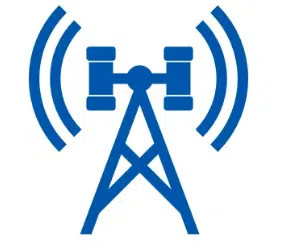Cell tower lease rates are determined through negotiations between property owners and cell tower companies or wireless carriers. The rates are influenced by various factors, and the outcome of the negotiations can vary widely. Here are key factors that play a role in determining cell tower lease rates:
- Location: Location is one of the most significant factors influencing lease rates. Areas with high population densities, strong demand for wireless services, and limited available sites tend to command higher lease rates. Urban and densely populated areas often have higher rates compared to rural locations.
- Property Size and Space: The amount of land or space available for the cell tower and related equipment can impact lease rates. Larger properties that accommodate multiple carriers (colocation) may receive higher lease rates.
- Market Demand: Market demand for wireless services and network capacity is a critical factor. Locations with a high volume of mobile device users, business activity, or tourist traffic may lead to increased demand for cell tower sites and higher lease rates.
- Competition: The presence of multiple wireless carriers competing for coverage in a specific area can drive up lease rates. Carriers often pay premiums for prime locations that enhance their network coverage and capacity.
- Lease Term: The duration of the lease agreement can affect the lease rate. Longer lease terms often lead to more favorable rates for property owners, as they provide stability and a longer stream of income.
- Rent Escalation Clauses: Lease agreements may include rent escalation clauses that specify how and when lease payments will increase over time. Common escalation methods include fixed annual increases (e.g., 3% per year) or adjustments tied to an inflation index.
- Zoning and Regulatory Considerations: Local zoning regulations and permitting requirements can impact the availability of suitable cell tower sites. Sites that comply with zoning regulations may command higher lease rates.
- Infrastructure Availability: The availability of existing infrastructure, such as tall buildings or utility poles suitable for antenna installations, can influence lease rates. Locations with readily available infrastructure may have lower lease rates.
- Economic Factors: Economic conditions in a region can affect lease rates. Areas with strong economic growth and business activity may have higher lease rates due to increased demand for wireless services.
- Negotiation Skills: The negotiation skills and leverage of both the property owner and the cell tower company play a role in determining lease rates. Skilled negotiators may secure more favorable terms.
- Future Technological Needs: The deployment of new technologies, such as 5G, may require additional cell tower sites or infrastructure upgrades, potentially affecting lease rates in specific areas.
- Environmental Considerations: Environmental factors and site-specific conditions may influence the suitability of a location for a cell tower and, consequently, lease rates.
Given the range of factors that influence cell tower lease rates, property owners should engage in negotiations with cell tower companies or wireless carriers to ensure that they receive fair market value for their lease. Consulting with experts in cell tower leasing or real estate professionals can also provide valuable guidance during the negotiation process to secure favorable lease terms.
